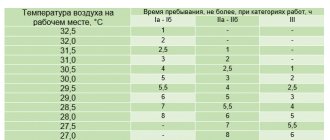About the professions “state and municipal servant”
Civil servant - who is this?
Worker and employee - these two professions differ from each other, since one produces products with his own hands, and the second solves mental problems. Employees are often found in municipalities and other government structures; they perform a role in the overall process, and do not sell their services and do not perform work. In their activities they are guided by state regulations.
The work day of a civil servant contains several successive stages:
- Studying reliable information.
- Conducting correspondence with organizational structures.
- Ability to make important decisions.
- Ensuring control over the work of subordinates.
- Participation in social and other events.
Citizens with special education are accepted for work in municipalities, but if staffing allows, then people with a narrower specialization can be recruited. These could be accountants, lawyers, occupational safety specialists, doctors, architects and other employees. Quite often, secretaries and clerks were and remain in demand.
What categories of personnel and their management structures exist?
Public relations specialistTechnician Computer (information and computing) center technician Design technician Laboratory technician Information security technician Inventory technician of buildings and structures Instrument technician Metrology technician Adjustment and testing technician Planning technician Standardization technician Labor technician Programming technician Technologist Commodity expertPhysiologistArtistConstruction artist (designer)Chief engineerEconomistEconomist computing (information and computing) centerEconomist for accounting and analysis of economic activitiesEconomist for contractual and claims workEconomist for material and technical supplyEconomist for planningSales economistEconomist for laborEconomist for financial workExpertExpert of road facilitiesExpert in industrial safety of lifting structuresLegal consultant 3.
What is the difference between an employee and a specialist
It turns out that there is a slight difference between an employee and a specialist, so these categories of employees should not be confused:
The very definition of “specialist” contains a rather capacious concept. This employee must be able to understand his field of activity very well and know all the intricacies, since he has extensive work experience behind him or his education allows him to have such knowledge.
After completing training at a university, as a rule, a “specialist” is awarded. Many people work in specialist positions, and their activities by profession may vary. In the structures of organizations, there are different assessments for these categories of workers: from a simple specialist to a leader.
An employee is an employee whose work activity involves solving mental problems. His main difference is that he should work for someone, for example, be a sales representative or provide services for the development of design and estimate documentation.
However, in most cases it is not possible to detect the difference between a specialist and an employee. For example, a financier will be considered not only a specialist, but also an employee at the same time.
A specialist has a social status and also performs work in a professional field. A specialist means that an employee works in his professional field, and an employee is considered a social worker.
Form for receiving a question, write yours
To ensure the life of the country, it is necessary to ensure the stable operation of all industries. These are the national economy, law enforcement agencies, the socio-cultural sphere, environmental and educational institutions and political organizations.
To organize the execution of the functions of these devices, specially hired employees work; who belongs to them, a list of professions is presented in this article. They coordinate social and financial processes, deal with issues of law and order, health care and education.
When performing their work duties, employees must comply with the legislative interests of those whose service their work is aimed at. This requires ensuring the qualifications of personnel, providing tools for intelligent production and regulating the product of services, as well as defining working hours.
State civil servant
It will be useful for everyone to know who civil servants are and who belongs to them, because working as a civil servant is quite common in the Russian Federation. At the same time, the current legislation quite strictly regulates both the legal regulation of who is a civil servant and a wide list of features and nuances of their activities, including a wide range of social guarantees. Also, the regulatory documents provide a complete and accurate list of professions of civil servants and those persons who belong to them.
Employees of the profession are
Employees are knowledge workers. If we talk specifically about what professions employees are, they are often employed in the fields of management, industry, education, trade and the service sector. Employment in such a social group requires a higher specialized education and a creative approach to accomplish current tasks.
You can give a list of white-collar professions. Top managers and officials are hired for public administration. The industry employs engineers, designers and designers. The service sector is represented by IT specialists and managers. Teachers, lecturers and graduate students are employed in the field of education. Cashiers and salespeople work in trade.
Professions related to employees
As mentioned above, the professions of specialists and employees are aimed at ensuring the functioning of the state apparatus, providing services to the population and maintaining the economy. Employment is characterized by creative and intellectual, non-physical stress.
The work requires high qualifications, an analytical rationalization mind, and erudition confirmed by a university diploma. Often, having a diploma is not enough and the applicant is required to have a master's or postgraduate degree.
To solve public problems in the public sphere, an impeccable knowledge of laws is required, for employment in the field of education - knowledge of pedagogical methods, and when working in the social sphere - organizational skills and personal responsibility. In other words, the position of an employee is a high-status job with high requirements for candidates.
Employees of the profession - list
There is a unified classifier of white-collar professions in the form of the ECSD directory. The list of workers' professions and office positions includes 35 issues. It includes the following positions in various variations:
- agents;
- educators;
- duty officers;
- cashiers;
- commandants;
- controllers;
- medical personnel;
- educators;
- operators;
- security guards and caretakers;
- secretaries;
- police officers and detectives;
- taxi drivers and forwarders.
Profession civil servant
Just as the professions of workers and the positions of employees differ, the position of a civil servant is also distinguished. Such people work in various ministries and government agencies. Their job is not to sell services, but to control this process. They are guided exclusively by legal norms.
The working day of a civil servant includes several mandatory stages:
- maintaining correspondence and studying current news;
- making important decisions;
- control over the actions of subordinates;
- participation in events.
Municipal employees professions - list
Municipalities employ specialists with higher education in the specialty “Municipal and State Administration”. However, depending on the size of the staff, people with a narrow specialization may also be involved. According to Federal Law 131, these are accountants, medical and social sector managers, occupational safety and sports specialists, lawyers, economists and architects. Some municipal institutions employ journalists to communicate with the public. Industry-wide white-collar professions such as document clerks and secretaries are also often in demand.
In reporting on the labor of enterprises and organizations of individual sectors of the sphere of material production (industry, construction, transport, state farms and some other production sectors), the number of workers is divided into two groups: workers and employees. From the group of employees, the following categories are distinguished: managers, specialists and other employees classified as employees.
ConsultantPlus: note.
By Decree of the State Standard of the Russian Federation dated December 26, 1994 N 367, the All-Russian Classifier of Worker Professions, Employee Positions and Tariff Grades OK 016-94 was put into effect on January 1, 1996.
When distributing workers by personnel categories in statistical reporting on labor, one should be guided by the All-Union Classifier of Worker Occupations, Employee Positions and Tariff Grades (OKPDTR), approved by the USSR State Standard 08.27.86 N 016.
OKPDTR consists of two sections:
classifier of workers' professions;
classifier of employee positions, which contains positions of managers, specialists and employees.
33. Workers include persons directly involved in the process of creating wealth, as well as those engaged in repairs, moving goods, transporting passengers, providing material services, etc. In OKPDTR, the professions of workers are listed in section 1.
Workers, in particular, include persons employed:
33.1. management, regulation and supervision of the operation of automatic machines, automatic lines, automatic devices, as well as direct management or maintenance of machines, mechanisms, units and installations, if the labor of these workers is paid at tariff rates or monthly salaries of workers;
33.2. production of material assets by hand, as well as with the help of simple mechanisms, devices, tools;
33.3. construction and repair of buildings, structures, installation and repair of equipment, repair of vehicles;
33.4. moving, loading or unloading raw materials, materials, finished products;
33.5. at work on receiving, storing and sending goods in warehouses, bases, storerooms and other storage facilities;
33.6. care of machines, equipment, maintenance of production and non-production premises;
33.7. sinking of surface and underground mine workings, drilling, testing, sampling and development of wells, geological surveying, prospecting and other types of geological exploration work, if their labor is paid at tariff rates or monthly salaries of workers;
33.8. machinists, drivers, stokers, switch post attendants, track and artificial structure linemen, loaders, conductors, workers repairing and maintaining transport lines, communication lines, repairing and maintaining equipment and vehicles, tractor drivers, mechanics, crop and livestock workers ;
33.9. postmen, telephone operators, telegraph operators, radio operators, telecom operators;
33.10. operators of computers and electronic computers;
33.11. janitors, cleaners, couriers, cloakroom attendants, watchmen.
34. Managers include employees holding positions of heads of enterprises and their structural divisions. The position in OKPDTR, which has a category code of 1, refers to managers.
Leaders, in particular, include:
directors (general directors), chiefs, managers, managers, chairmen, commanders, commissars, foremen, work performers at enterprises, structural units and divisions;
chief specialists: chief accountant, chief dispatcher, chief engineer, chief mechanic, chief metallurgist, chief welder, chief agronomist, chief geologist, chief electrician, chief economist, chief researcher, chief editor;
Personnel categories are a classification of employees performing hired work in accordance with the functions they perform. To characterize the totality of employees at an enterprise, the terms “personnel”, “personnel” and “work collective” are mainly used.
What categories are the personnel divided into?
In modern legislation there is no clear formulation of such a concept as “categories of personnel”. However, there is a regulatory document that contains a separate section “Categories of Personnel”. This document is the “Instruction on statistics of the number and wages of workers and employees at enterprises, institutions and organizations.”
After reading the contents of Section No. 5, you can determine that the concept of “Personnel Categories” includes groups of workers who are united among themselves depending on the job functions they perform.
All employees of an organization are usually divided into two groups - employees and workers. Let's look at each of them in more detail. The first group combines several categories:
- Managers;
- Specialists;
- Other workers who are classified as employees
The first category includes employees holding positions of heads of institutions and heads of structural divisions, as well as their deputies. Their main function is management. In addition, all these employees have other employees subordinate to them.
- secretary;
- clerk;
- courier and others.
In other words, these workers are called support personnel - VP.
The role of specialists is performed by persons participating in the management of the organization and engaged in various types of work, where the main share is allocated to intellectual work. This includes employees of the engineering and technical service, economic department and others.
Specialists are divided into two groups:
- administrative and management personnel (AUP) – specialists performing management functions. The result of their activities is information, which is almost impossible to do without in management. These include assistants, accountants, marketers, analysts and others;
- engineering and technical workers (E&T) - whose activities are aimed at obtaining design, technological or design information in the field of technology and production techniques. These are engineers, technologists, designers and others.
The second group - workers, includes workers whose activities are directly related to the creation of material assets, carrying out repair work, and providing various types of services:
- transport;
- material and others.
Dividing personnel into categories is a very important point. It allows you to calculate wages for employees of an institution. Thanks to this division, it is much easier to carry out the placement of personnel in the case of determining personnel policies.
What documents to use when dividing personnel into categories and groups
Law No. 90-FZ introduced changes regarding professional qualification groups. These include groups of workers and employee positions, the formation of which takes into account the field of activity, as well as all the requirements necessary for the implementation of a particular professional activity.
If we talk about requirements, they usually relate to professional training and skill level.
The Ministry of Health and Social Development of the Russian Federation has issued several orders approving professional qualification groups and criteria for classifying professions and positions into qualification professional groups
According to these documents, all positions and professions are conditionally divided into several qualification groups:
- professions of workers and positions of employees that do not require professional education;
- professions of workers and positions of employees requiring primary or secondary vocational education, as well as heads of structural units that require initial vocational education;
- positions of employees requiring higher professional education with the qualification “bachelor”, and positions of heads of structural divisions requiring secondary vocational education;
- employee positions requiring higher professional education with the qualification “certified specialist” or qualification “master”, as well as heads of structural units with a higher education.
Regulatory documents defining categories of personnel can be combined into two groups - industry-wide and sociocultural.
The second includes documents that relate specifically to the cultural sphere.
Personnel are persons who are included in labor relations within a specific legal entity. This is the personnel of the enterprise, which includes employees, owners and co-owners.
Main categories of personnel
All employees can be divided into the following groups: employees and workers. Employees include the following categories of employees: specialists, management and other employees who may be classified as employees. Personnel categories are distributed in accordance with the regulatory document (All-Russian Classifier of Occupations). This document contains two sections of lists: employee positions and worker professions. The first include employees who hold leadership positions at enterprises and in their structural divisions. This category of personnel may include directors, managers, managers and chief specialists.
Workers may include persons who perform primarily the functions of physical labor and are directly involved in the creation of material assets, maintaining equipment and production premises in working order. Employees are workers who carry out training and subsequent documentation, as well as business maintenance, accounting and control.
Main characteristics of personnel
Before qualification, you need to understand who exactly belongs to the personnel. Personnel are characterized by these characteristics:
- Involvement in labor relations.
The latter must be documented. In particular, an employment agreement must be drawn up. - Characteristics on the basis of which activities are carried out.
For example, this could be qualifications, specialty, education, experience. - Having a goal for the activity.
The goals of the specialist’s work must be correlated with the goals of the enterprise.
Personnel management is distinguished by such features as:
- Integration into the overall management structure.
- Compliance with the existing corporate culture.
- Availability of job planning and employee training.
- Taking into account professional qualities and assessing the performance of employees.
- Centralization of management processes.
Employees who are not registered at the enterprise in any way will not be considered personnel.
Factors influencing personnel classification
People are the most important element of the productive forces and the main source of development of the entire economy. Their education, skill, training and motivation are the main tools of any production. Experts have proven that there is a certain dependence between the well-being of people and the competitiveness of the economy on the quality of the category of personnel of an enterprise and organization.
The formation of an enterprise's personnel is influenced by both internal (products, technology and production organization) and external (demographic process, moral and legal norms of society, as well as the nature of the labor market) factors. At the same time, the latter must specify the categories of personnel in terms of macroeconomic parameters: the number of working-age (active) population, its general educational level, employment level and potential labor reserve. These characteristics also determine the qualitative and quantitative parameters of labor resources.
Main and support staff
Many business entities, in addition to their main activities, also perform functions that do not correspond to their main purpose. Therefore, there are such categories of production personnel: main and non-core activities. For example, the first group in industry includes workers of all types of production (main, service and auxiliary), as well as employees of research departments, plant management, security, and warehouses. In other words, all those who are engaged in any way in production or its direct service. The second group includes personnel registered in structures that are on the balance sheet of a business entity, but are not directly related to production. For example, kindergartens, nurseries, housing and communal services, clinics and departmental educational institutions.
The specified classification of personnel at an enterprise is needed for calculating wages and coordinating certain labor criteria with performance indicators. At the same time, the interaction of enterprises with other commercial entities and banking institutions allows us to make this grouping conditional.
Grouping of personnel depending on the functions performed
Depending on the nature of the functions performed, there is a broader classification of personnel at the enterprise than indicated above: management, specialists, workers and employees.
Managers include employees who head not only enterprises, but also their structural divisions. These include directors, chiefs, managers, managers, foremen, as well as their deputies.
The “specialists” category of personnel includes workers who perform special economic and engineering work. This includes engineers, economists, accountants, standard setters, administrators, legal advisers and sociologists.
Employees are workers who prepare documentation, record keeping, control and business maintenance of business activities. These include accountants, clerks, agents, draftsmen, secretaries and stenographers.
The category of personnel “workers” implies the presence of employees who are directly involved in the creation of various material assets, repair or movement of goods, transportation of passengers, and the provision of material services. In addition to the above, this category includes janitors, cleaners, security guards, couriers and cloakroom attendants.
Categories of managers
Production managers are divided into these categories:
- Linear.
These managers make decisions affecting all functional areas of activity. Examples: general director, technical service manager, workshop manager. - Nonlinear.
These are functional managers who perform specific management functions. Examples: financial director, manager responsible for personnel.
Managers are divided by management levels:
- Grassroots level. For example, master.
- Middle level. Heads of department and workshop.
- Senior management. Director or his deputy.
Lower-level managers manage small departments, middle-level managers manage large departments, and senior managers manage the enterprise as a whole.
Professions and specialties
This classification of personnel is especially interesting. A profession is represented by a type of work activity, the implementation of which may require special knowledge and skills.
A specialty is a fairly narrow subtype of work activity within a profession. Thus, the profession of a turner itself can cover such specialties as a rotary turner, a boring turner, etc.
The professionalism of the personnel always depends both on the specifics of the activity, products and services, and on the level of technical condition. Each industry is characterized by the presence of specialties. At the same time, there are common professions of employees and workers. An example is the food industry, which has about 850 specialties and professions. However, only a few of them are specific to this industry.
Who are a specialist and manager?
Specialist
– a person who has undergone special training and has knowledge in a certain field of activity (law, medicine, management, programming).
The level of competence is confirmed by a special document, as well as work experience and letters of recommendation. To find a job, a specialist in most cases requires a state diploma. Manager
is a representative of administrative personnel who carries out management functions of lower, middle or senior management. In Russia, managers are also called employees of companies who interact directly with the employer (selling goods, cleaning, etc.). However, such a “proud” name only increases the status of disreputable professions, but has no special relation to reality.
Grouping employees by qualification
This classification is based on the ability to perform work of a certain complexity. In this case, we can talk about qualifications, represented by a set of special knowledge and practical skills that determine the level of preparedness of employees to perform certain professional duties.
The qualifications of management personnel are characterized by their level of education and experience in a specific position. In this case, it is customary to distinguish the following levels of specialists: the highest qualifications (employees with academic degrees and titles); higher qualifications (employees have higher education and practical experience); average qualifications (workers who have specialized secondary education and relevant experience); practitioners (availability of engineering and economic positions among workers).
In what cases is a waybill not needed?
Gasoline and other fuels and lubricants can be used not only for transport needs. For example, an organization uses a lawnmower to maintain its grounds. The unit is fueled with gasoline. Obviously, using a waybill to confirm its consumption is meaningless here. In such cases, use the technical documentation for the unit, which indicates the consumption rates of gasoline per hour of operation and oils (usually indicated per liter of fuel consumption).
Another option is to experimentally determine in the presence of a commission how much fuel and lubricants are actually burned per unit of time. These indicators and calculations are entered into the local NA, for example “Lawn mower performance indicators”. If the same territory is being cultivated, then its area is known and the amount of time required for mowing and gasoline consumption can be determined.
After the work is completed, on the basis of a work order or other supporting document, an act for writing off fuel and lubricants is drawn up. It indicates the area of the mowed area, the operating time of the unit, the name and quantity of gasoline consumed, its price and the cost charged to expenses. The act includes information that the established standards for fuel consumption are not exceeded, the expenses are justified and the gasoline is subject to write-off. The document is signed by the members of the commission and certified by the director.
Skill level
According to the level of qualification, employees are divided into highly qualified, qualified, semi-skilled and unskilled. They can perform work of varying complexity, and they tend to have unequal professional training.
The specified qualification characteristics of employees, along with such as age, gender, length of service and degree of labor mechanization, will serve as the basis for calculations of various types of structures. To increase the efficiency of an enterprise, it is important not only to ascertain the number of employees, but also to study a certain relationship between them.
This approach will allow not only to identify factors and their influence on the results of the enterprise’s activities, but also to calculate the corresponding structural changes with their driving forces and trends. On this basis, a real strategy for the development of labor resources is formed.
Despite the fact that over the past few decades the prestige of blue-collar professions has declined significantly and every year thousands of young people across the country receive degrees in law and economics, the situation is gradually improving. The fact is that if no one works with their hands, and everyone is a manager, then the production of anything will simply be impossible. In addition, a highly skilled worker can earn much more than his white-collar peer, while avoiding so-called professional burnout.
Opportunities obtained by bachelor and specialist
Upon completion of training, the specialist is issued a diploma corresponding to the chosen specialty, and a diploma of general higher education.
In the future, a bachelor can continue his studies in a master's program, receiving more in-depth training in a narrow specialization. A specialist can also enroll in a master's program, but for him studying there is equivalent to receiving a second higher education and can only be carried out on a paid basis. A specialist can immediately enter graduate school after completing higher education, while a bachelor can go to graduate school only after completing a master's degree.
Bachelors often have problems finding employment, as some employers are wary of the qualifications they have received and prefer to hire specialists. At the same time, a bachelor's degree is international and, accordingly, is recognized abroad.
However, despite the international recognition of a bachelor's degree, in Russia the qualification of a specialist to this day remains more familiar, relevant and in demand in the labor market.
Globalization and integration of cultures has led to the borrowing of not only words, but also entire categories. The familiar narrow specialist was replaced by a universal manager, about whom legends and anecdotes are made up. Let's try to figure out how significant the difference is between these professions and what exactly it is expressed in.
The main differences between a worker and an employee
First of all, employees differ from workers in that the performance of their job duties does not involve physical labor.
In most cases, the execution of a task assigned to an employee does not necessarily have to be carried out in accordance with some established algorithm of actions. This provides an opportunity for representatives of this social group to approach their daily work creatively. An employee can be involved in industry (engineers, energy), and in the government apparatus (all kinds of officials), and in education (professors, graduate students), and in trade (managers, merchandisers). Remuneration for employees in most cases is a fixed salary + bonuses for specific projects. The working class traditionally includes all those who earn their living by physical labor. Its representatives are miners, electrolyzer workers, drivers, and people employed in conveyor production. The worker's wages are most often piecework-bonus. In order to start your career in one of the working professions, you do not need to obtain a higher education - it is enough to graduate from a vocational school (nowadays such educational institutions are more often called “lyceum”) or a technical school, and in some cases, complete secondary education is sufficient.
Peculiarities of labor of workers and employees
The vast majority of employees work 40 hours a week, for example from 8 am to 5 pm in a five-day work week.
The worker may have the same schedule, or may have a shift schedule, in which one shift lasts 6, 8, 12 or 24 hours and can begin in the morning, afternoon or evening. An employee's place of work is most often an office in which he creates an intellectual product, using computer technology and without being subjected to heavy loads. The workplace of a working class representative is a workshop, a mine, a special equipment cabin; there, using mechanical tools of labor, a person creates a truly calculable product.
Sometimes almost any employee is forced to undergo strong emotional stress during working hours. In contrast, a worker at the end of his shift can allow himself to forget about everything related to his professional activity, but only until the start of the next shift.
TheDifference.ru determined that the difference between an employee and a worker is as follows:
Qualification. In most cases, workers need a secondary specialized education, while employees need a higher education. Means of production. Workers use “manual” labor tools, employees use “intellectual” ones. Product of labor. A worker produces real quantifiable objects, an employee provides services. Prestige. The work of an employee is considered more honorable than that of a worker. Features of the working day. Employees, as a rule, work from 9 am to 6 pm, production workers work around the clock in shifts.
Source: portal100.ru








